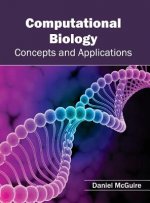
Kód: 12738735
Genetic Conservation and Utilization of Indigenous Livestock in Northern Thailand
Autor Rangsun Charoensook
In recent years livestock production in Thailand has switched from backyard systems to industrialized husbandry. In parallel, exotic livestock was imported to improve production performance and for economically important traits. I ... celý popis
- Jazyk:
 Angličtina
Angličtina - Vazba: Brožovaná
- Počet stran: 166
Nakladatelství: Cuvillier Verlag, 2011
- Více informací o knize

Mohlo by se vám také líbit
-

Critical Thinking: Understanding the Principles and Processes of Thinking Well
767 Kč -

Chuckle - Choo!
310 Kč -

Golden Road
362 Kč -

Computational Biology: Concepts and Applications
3456 Kč -

JapJi
228 Kč -

Isim Sehir Hayvan
645 Kč
Darujte tuto knihu ještě dnes
- Objednejte knihu a zvolte Zaslat jako dárek.
- Obratem obdržíte darovací poukaz na knihu, který můžete ihned předat obdarovanému.
- Knihu zašleme na adresu obdarovaného, o nic se nestaráte.
Více informací o knize Genetic Conservation and Utilization of Indigenous Livestock in Northern Thailand
Nákupem získáte 66 bodů
 Anotace knihy
Anotace knihy
In recent years livestock production in Thailand has switched from backyard systems to industrialized husbandry. In parallel, exotic livestock was imported to improve production performance and for economically important traits. Indigenous livestock has therefore gradually been used for crossbreeding and was finally replaced completely by exotic commercial breeds. However, these breeding strategies oppose the concepts of sustainability and resource management and will lead to the threatening risk of losing genetic identity and diversity of indigenous breeds. For that reason, the overall goals of this study are to gain genetic information at the molecular level that is indispensable to conserving Thai pigs and cattle breeds as well as to define their potential as genetic resources. In particular, this study is aimed at: (1) to investigate the mtDNA composition and to determine the genetic diversity of pigs indigenous to Northern Thailand, (2) to assess the phylogeny of Thai indigenous pigs, to compare them with further Asian and European pigs and to clarify their origin of domestication, (3) to compare the genetic background of Thai indigenous pigs with commercial pigs used for meat production in Thailand and with selected Chinese pig breeds (i.e. Jiangquhai, Luchuan, Minzhu, Rongchang, Yujiang and Tibetan), (4) to search for sequence polymorphisms within the bovine HSP90AB1, to record physiological responses against heat stress and to describe putative associations between them in three cattle breeds used in Thailand. The complete mtDNA control region (1264-1324 bp depending on the individual) was comparatively sequenced to determine the degree of shared haplotypes, the population structure and the phylogenetic relationships within Thai pig populations. For that, samples of 72 Thai native pigs and 11 Thai wild boars were collected in six regions (i.e. Mae Hongson, Southern and Northern part of Chiang Mai, Chiang Rai, Nan and Uttaradit provinces) of Northern Thailand. In total 36 nucleotide variations leading to the formation of 24 different haplotypes were described (TNH01 to TNH02 and TWH01 to TWH04). The phylogenetic tree was separated into two main clades: a European (E) clade and an Asian (A) clade with further Asian subclades (AS1, AS2 and THG). Twenty-three of the 24 mtDNA haplotypes were integrated into the Asian clade of the phylogenetic tree and eight of them recapitulated another major cluster of haplotypes (THG). One haplotype (TNH01) fit to the European clade of the phylogenetic tree. Average pairwise distances of 0.0136 ± 0.0029 (between AS2 and THG), of 0.0109 ± 0.0023 (between AS2 and AS1) and of 0.0084 ± 0.0023 (between THG and AS1) resulted in estimates for the time since divergence of 90,000 - 496,000 years between mtDNA clade AS2 and clade THG, 72,000 - 397,000 years between clade AS2 and clade AS1, and 56,000 - 306,000 years between clade THG and clade AS1. The data implies that THG and AS1 diverged from the AS2 clade, but also that AS1 is evolutionarily older than THG. In addition, our present study suggested that Thai native pigs are closely related with Thai wild boars, but are also distinctly separated from them enough and can be traced back to the common Asian ancestor. An additional analysis using 510 bp of the sequenced mtDNA incorporated the THG haplotypes to clade MTSEA (mountainous and Southeast Asian distribution) to form haplogroup MTSEA-THG. Recently, MTSEA was renamed in MC3. MC3 contains only signatures of pigs scattered across the Indo-Burma Biodiversity Hotspot (IBBH), a region including Thailand to the Kra Isthmus. The assignment of the 15 porcine Thai haplotypes to cluster AS1, supports the hypothesis of a shared common ancestors with the Chinese domestic pigs, but the formation of the separate MTSEATHG clade is also most putatively an indication for a further independent domestication event in Southeast Asia (SEA) in the past. All haplotypes of haplogroup MTSEA-THG have revealed unique and previously unknown nucleotide signatures at positions 24 (nucleotide A) and at positions 183 (nucleotide C) that differentiate them from all other porcine mtDNA haplotypes. The genetic background and genetic diversity at the nuclear DNA level of the Thai indigenous breeds was analyzed using 26 microsatellite markers. Thai indigenous pig populations have a high genetic diversity being mirrored in relatively high scores for the effective heterozygosity (He; 0.71) and the effective number of alleles (Ne; 3.71). Furthermore, the genetic distances, the pairwise proportion of different alleles, the neighbour-joining tree and the multidimensional analysis indicated a close genetic relationship between the Thai indigenous and the selected Chinese pigs. Contrary to that Thai pigs are distinctly different from European pigs. Nevertheless, a genetic introgression traced back to European commercial breeds is evident in some of the Thai native pigs. The genetic analyses clearly point out that Thai native pig populations are unique genetic resources. Thailand is a tropical country and lies in the hot and humid climatic zones of the world. The environmental heat, resp. the heat stress, is most detrimental to cattle production and welfare which can be visible, for example, a hindrance of feed consumption, a decreased milk production and a limited reproduction performance. Heat shock proteins act as molecular chaperones that have preferentially been transcribed in response to severe perturbations of the cellular homeostasis, such as heat stress. Thus, the traits respiration rate (RR), rectal temperature (RT), pack cell volume (PCV), and the individual heat tolerance coefficient (HTC) were recorded as physiological responses on heat stress (environmental temperatures) in Bos taurus (crossbred Holstein Friesian; HF) and Bos indicus (Thainative cattle: White Lamphun; WL and Mountain cattle; MT) animals. The 47 apparently healthy not lactating females were randomly selected and kept at the experimental farm of the Chiang Mai University in Thailand. RR and RT were measured in the morning (8:00 am) and in the afternoon (2:00 pm), two weeks per month for four consecutive months (September to December) to achieve 8 observations per animal. During the experimental time an averaged surrounding temperature of 22 °C with 94% relative humidity was measured in the morning. The records for the afternoon were 34°C and 68% relative humidity. Polymorphisms of the heat shock protein 90-kDa beta gene (HSP90AB1) were evaluated by comparative sequencing of animals representing Bos taurus and Bos indicus. Nine SNPs were identified, i.e. three in exons 10 and 11, five in introns 8, 9, 10, 11, and one was located in the 3'UTR. The exon 11 SNP g.5082 C>T led to a missense mutation (alanine to valine), the further SNPS proved to be silent. The calculated genetic heterozygosity based on allele frequencies suggests a higher genetic diversity of Thai native cattle (MT = 0.326 and WL = 0.307) compared to the Bos taurus animals (HF = 0.071). During the period of extreme heat (in the afternoon) RR and RT were in each of the three breeds elevated, whereas the PCV decreased. MT and WL were superior in all physiological traits compared to HF. The association analysis using a stepwise regression revealed that the T allele at SNP g.4338T>C within intron 9 improved the heat tolerance (p < 0.05) of the animals. Allele T was exclusively found in WL animals and to 84% in MT. HF cattle revealed an allele frequency of only 18%. The study indicates breed specific physiological responses to heat stress. Here, polymorphisms within HSP90AB1 were not causative for the physiological responses, however, the results propose that this gene is an attractive candidate for heat tolerance, and should at least be used as a genetic marker to select appropriate breeds for hot climates.
 Parametry knihy
Parametry knihy
658 Kč
- Plný název: Genetic Conservation and Utilization of Indigenous Livestock in Northern Thailand
- Autor: Rangsun Charoensook
- Jazyk:
 Angličtina
Angličtina - Vazba: Brožovaná
- Počet stran: 166
- EAN: 9783869558004
- ISBN: 3869558008
- ID: 12738735
- Nakladatelství: Cuvillier Verlag
- Hmotnost: 224 g
- Rozměry: 210 × 148 × 9 mm
- Datum vydání: 20. June 2011
Oblíbené z jiného soudku
-

Berserk Deluxe Volume 1
1033 Kč -

Berserk Deluxe Volume 2
1033 Kč -

Haunting Adeline
617 Kč -

Cry Baby Coloring Book
242 Kč -

Berserk Deluxe Volume 3
1138 Kč -

The Official Stardew Valley Cookbook
586 Kč -

Hunting Adeline
633 Kč -

Atomic Habits
464 Kč -

Powerless
259 Kč -

House of Leaves
504 Kč -

Harry Potter and the Prisoner of Azkaban (Minalima Edition)
876 Kč -

Chainsaw Man, Vol. 15
251 Kč -

Berserk Deluxe Volume 4
1165 Kč -

Gravity Falls Journal 3
401 Kč -

White Nights
71 Kč -

JUJUTSU KAISEN V22
239 Kč -

Iron Flame
435 Kč -

Dungeons & Dragons Essentials Kit (D&d Boxed Set)
605 Kč -

No Longer Human
335 Kč -

A Little Life
241 Kč -

Surrounded by Idiots
256 Kč -

Twisted Love
215 Kč -

Berserk Deluxe Volume 5
1115 Kč -

Fourth Wing
214 Kč -

Berserk Deluxe Volume 6
1086 Kč -

Twisted Lies
215 Kč -

Bungo Stray Dogs, Vol. 8 (light novel)
347 Kč -

Twisted Games
259 Kč -

Don't Believe Everything You Think
328 Kč -

BALLAD OF SWORD & WINE QIANG JIN JIU V01
372 Kč -

The 48 Laws of Power
523 Kč -

Court of Thorns and Roses Paperback Box Set (5 books)
1257 Kč -

Court of Thorns and Roses
218 Kč -

The Creative Act
552 Kč -

New Happy
575 Kč -

Heaven Official's Blessing: Tian Guan Ci Fu (Novel) Vol. 1
357 Kč -

Reckless
282 Kč -

Berserk Deluxe Volume 7
1110 Kč -

Icebreaker
239 Kč -

Dune Messiah
178 Kč -

Court of Mist and Fury
239 Kč -

Harry Potter and the Chamber of Secrets: MinaLima Edition
720 Kč -

Twisted Hate
214 Kč -

Vagabond (VIZBIG Edition), Vol. 2
508 Kč -

Little Mushroom: Judgment Day
427 Kč -

Heaven Official's Blessing: Tian Guan Ci Fu (Novel) Vol. 2
415 Kč -

CHAINSAW MAN V14
233 Kč -

King of Sloth
238 Kč -

The Laws of Human Nature
355 Kč
Osobní odběr Praha, Brno a 12903 dalších
Copyright ©2008-24 nejlevnejsi-knihy.cz Všechna práva vyhrazenaSoukromíCookies



 Vrácení do měsíce
Vrácení do měsíce 571 999 099 (8-15.30h)
571 999 099 (8-15.30h)